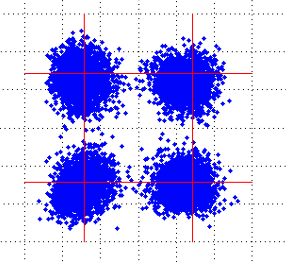Introduction
The telecommunications industry constantly strives to maximize the use of fiber optic capacity. Despite the broad spectral width of the conventional C-band, which offers over 40 THz, the limited use of optical channels at 10 or 40 Gbit/s results in substantial under utilization. The solution lies in Wavelength Division Multiplexing (WDM), a technique that can significantly increase the capacity of optical fibers.
Understanding Spectral Grids
WDM employs multiple optical carriers, each on a different wavelength, to transmit data simultaneously over a single fiber. This method vastly improves the efficiency of data transmission, as outlined in ITU-T Recommendations that define the spectral grids for WDM applications.
The Evolution of Channel Spacing
Historically, WDM systems have evolved to support an array of channel spacings. Initially, a 100 GHz grid was established, which was then subdivided by factors of two to create a variety of frequency grids, including:
- 12.5 GHz spacing
- 25 GHz spacing
- 50 GHz spacing
- 100 GHz spacing
All four frequency grids incorporate 193.1 THz and are not limited by frequency boundaries. Additionally, wider spacing grids can be achieved by using multiples of 100 GHz, such as 200 GHz, 300 GHz, and so on.
ITU-T Recommendations for DWDM
ITU-T Recommendations such as ITU-T G.692 and G.698 series outline applications utilizing these DWDM frequency grids. The recent addition of a flexible DWDM grid, as per Recommendation ITU-T G.694.1, allows for variable bit rates and modulation formats, optimizing the allocation of frequency slots to match specific bandwidth requirements.
Flexible DWDM Grid in Practice

The flexible grid is particularly innovative, with nominal central frequencies at intervals of 6.25 GHz from 193.1 THz and slot widths based on 12.5 GHz increments. This flexibility ensures that the grid can adapt to a variety of transmission needs without overlap, as depicted in Figure above.
CWDM Wavelength Grid and Applications
Recommendation ITU-T G.694.2 defines the CWDM wavelength grid to support applications requiring simultaneous transmission of several wavelengths. The 20 nm channel spacing is a result of manufacturing tolerances, temperature variations, and the need for a guardband to use cost-effective filter technologies. These CWDM grids are further detailed in ITU-T G.695.
Conclusion
The strategic use of DWDM and CWDM grids, as defined by ITU-T Recommendations, is key to maximizing the capacity of fiber optic transmissions. With the introduction of flexible grids and ongoing advancements, we are witnessing a transformative period in fiber optic technology.

